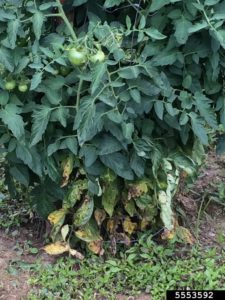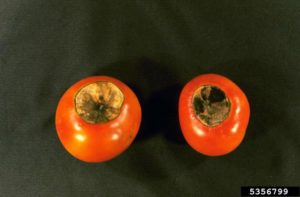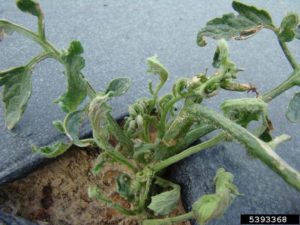Common Diseases of Tomato Plants in Burke County
go.ncsu.edu/readext?604304
en Español / em Português
El inglés es el idioma de control de esta página. En la medida en que haya algún conflicto entre la traducción al inglés y la traducción, el inglés prevalece.
Al hacer clic en el enlace de traducción se activa un servicio de traducción gratuito para convertir la página al español. Al igual que con cualquier traducción por Internet, la conversión no es sensible al contexto y puede que no traduzca el texto en su significado original. NC State Extension no garantiza la exactitud del texto traducido. Por favor, tenga en cuenta que algunas aplicaciones y/o servicios pueden no funcionar como se espera cuando se traducen.
Português
Inglês é o idioma de controle desta página. Na medida que haja algum conflito entre o texto original em Inglês e a tradução, o Inglês prevalece.
Ao clicar no link de tradução, um serviço gratuito de tradução será ativado para converter a página para o Português. Como em qualquer tradução pela internet, a conversão não é sensivel ao contexto e pode não ocorrer a tradução para o significado orginal. O serviço de Extensão da Carolina do Norte (NC State Extension) não garante a exatidão do texto traduzido. Por favor, observe que algumas funções ou serviços podem não funcionar como esperado após a tradução.
English
English is the controlling language of this page. To the extent there is any conflict between the English text and the translation, English controls.
Clicking on the translation link activates a free translation service to convert the page to Spanish. As with any Internet translation, the conversion is not context-sensitive and may not translate the text to its original meaning. NC State Extension does not guarantee the accuracy of the translated text. Please note that some applications and/or services may not function as expected when translated.
Collapse ▲Tomato Series – Article Four
To be such a popular crop, tomatoes certainly are finicky! There’s not enough paper or ink to talk about all of the diseases they attract. But, today we’re going to look at the most common diseases for Burke County tomatoes. Some just might surprise you.
The most common disease in our area is early blight. This is caused by a fungus that lives in the soil. Rain is splashed up on lower leaves and stems and the disease moves right up the plant. The oldest leaves develop ringed spots with a yellow halo. Browning of leaves also occurs as does sunken lesions on the stems. Affected fruits will develop sunken spots and as the disease moves up the plant, harvest is severely compromised. Continued applications of products containing mancozeb and fixed copper will give good control of the disease. Plants should be well spaced for adequate air movement and crop rotation should be practiced. Mulching of newly planted transplants will also help to control the splashing of water on the lower leaves.
Blossom end rot is another common ailment of our tomato crops. This isn’t a disease but a calcium deficiency. Symptoms include rot on the blossom end of the fruit. Blossom end rot is caused by the lack of the plants’ ability to take up calcium through the roots. Improper pH, irregular watering and tilling too close to the root system can cause this problem. A temporary fix would be to apply a calcium spray to the foliage of the plant. Soil testing can help correct pH imbalances and keeping plants well-watered is also helpful.
Herbicide damage is also a common ailment to tomatoes. Tomatoes are highly sensitive to drift from weed killers that have been sprayed in other areas. High humidity and wind can cause these products to drift, damaging delicate tomato plants. Deformed leaves and buds along with stunting and lack of growth are signs of this problem.
While there are many more disease problems that affect tomatoes, these are the ones that I get the most calls about. Remember to space plants properly, giving them plenty of room. Water regularly and do a soil test every few years. Rotate your tomatoes each year and check them often. The earlier problems are detected, the easier the problem is to control.
One more way to fight disease problems in the garden is to by disease resistant plants. When you see letters after the name of the plant such as V, F, FF, N, these are indicators that the plant is resistant to certain diseases. While heirloom varieties are popular, modern tomatoes have much more disease resistance. It’s worth thinking about.







